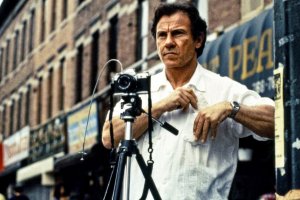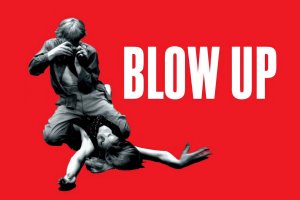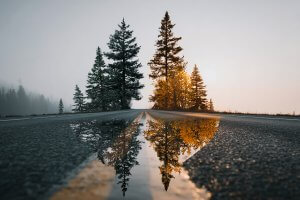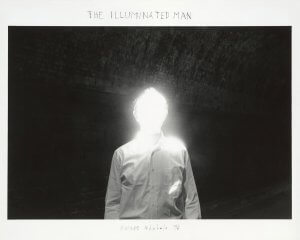Photography in the times of the #photogr@phy (second part)
Blade Runner (Ridley Scott, 1982) showed us a future that, by November 2019, has become dystopian in many ways. Although many of today’s cities resemble that futuristic Los Angeles, bleak, dank and saturated with neon lights (now LEDs), the truth is that robotics, AI and genetic engineering are still in their infancy. Humanity has not colonised outer space and the closest thing I have ever seen to a flying car was the Ford Thunderbird in Thelma and Louise.
But Blade Runner, an undisputed masterpiece of cinema, and not just science fiction, should be compulsory viewing for any lover of cinematographic photography, or photography for that matter. He gave us some of the most iconic artefacts in the history of cinema, such as the spinners, the blaster with which Rick Deckard eliminated replicants with a clean shot, or the famous Voight-Kampff test case. But undoubtedly, the gadget that surely delighted any photographer before the digital era was the Esper photo analysis machine.
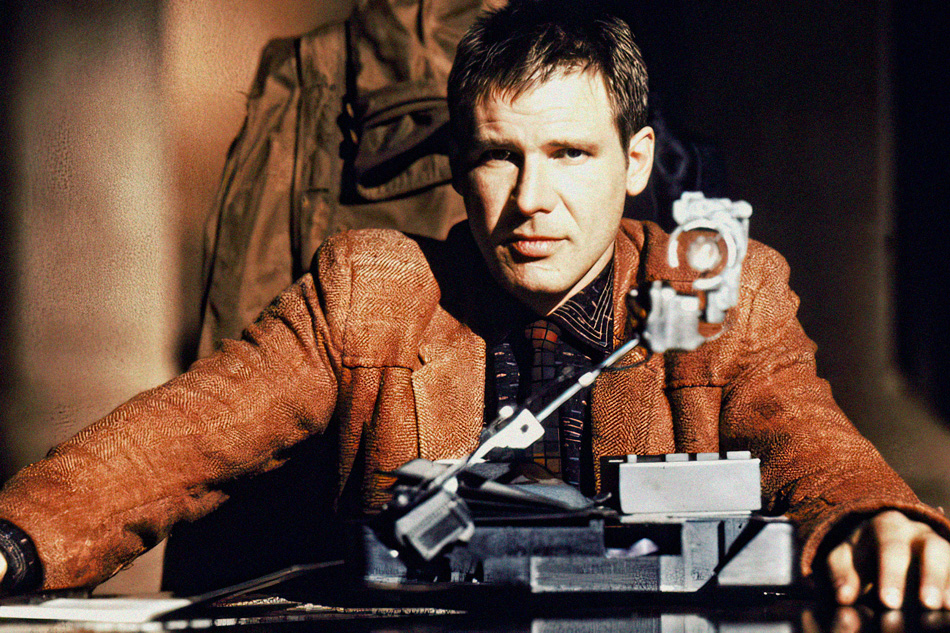
Contenido
Blade Runner
For those of you who haven’t seen Blade Runner (and that’s enough!) I’ll tell you what it’s about. Rick Deckard (Harrison Ford) is a Los Angeles cop who is tasked with eliminating 4 ‘skinjobs’, which is the derogatory nickname given to the replicants, androids created by the Tyrell Corporation, in the image and likeness of humans, through genetic engineering of the good kind, and not that of Dolly the sheep. These replicants end up being so perfect that they could even surpass their own human creators in intelligence, something which, given the way heads are nowadays, might not be so difficult.
But the fact is that over time, these humanoids begin to develop emotional capacities not far removed from those of any mortal, asking themselves the same vital questions that have undoubtedly caused us to lose sleep more than once… Who are we? Where do I come from? How long will I live? This leads to a rebellion of Nexus-6 replicants, the most technologically advanced, who escape from an outer colony to go to Earth in search of their creators, where the Blade Runner Unit to which Deckard belongs is in charge of hunting them down and eliminating them.
The Esper machine
In the famous scene of the photo analysis we see Deckard introduce a photograph into the Esper machine, which is capable of enlarging a printed image (supposedly on photographic paper) to a level of definition that, well, we accept octopus as a companion animal because it is a science fiction film. But what’s more, it not only enlarges, but by means of a Sinking the Fleet-style coordinate system, it can vary the angle from which the photo was taken, revealing hidden parts of the room being photographed that are apparently not visible in the image.
There has been a lot of speculation about how the Esper machine works, with very interesting theories for any photography enthusiast, but it is not the technological part that motivates this post but the, so to speak, anthropological one… The one that makes the imaginary of a science fiction film have so many links with our human behaviour in the real world.
Photography in Blade Runner
Why is photography so important in Blade Runner? Because it turns out that these replicants, with the intention of making them “more human than humans”, have been implanted with a kind of artificial memory in the form of memories, which gives them the status of knowing they are alive. Because remembering is the proof that they have had a life, a fundamental argument for understanding a good part of the film and that in the new (and also fantastic) adaptation of the Blade Runner universe recently made by Denis Villeuneve, Blade Runner 2049, acquires a higher level with the incorporation of a technique that, nowadays, is totally recognisable to us: virtual reality.
In fact, the photographs that appear in the first Blade Runner, supposedly taken by the replicants themselves or perhaps created by the engineers of the Tyrell Corporation, are an obsession for one of the androids, Leon Kowalski (Brion James). To the point of putting his short artificial life (4 years according to the plot) in danger to try to recover them. They are the irrefutable evidence of their existence, to which they cling, refusing to accept their non-human condition, a product manufactured to be a slave of those who created them. Photography as proof of life, for its ‘unquestionable’ properties of realism. I think therefore I am… No. I exist because I remember…
Association between memory and photography
The amalgamation of memory and photography is not, of course, something that Blade Runner invented. The evocative capacity of photography to make us remember is something intrinsic to its existence since its beginnings.
Fragments of reality trapped in a limited format whose effectiveness in transporting us to the lived moment is still overwhelming, even more so than a home video, which in theory should be a more effective shortcut to our memory due to its condition of continuity and movement. But the capacity that a single photograph has to transmit information to our brain and awaken emotions in us is still unbeatable. In a video you see the action and our mind focuses on it, but with a photo the memory is projected in our brain and can be relived with all five senses, and even magnified, which is something that ends up happening with the passage of time…
Losing an Instagram account is like losing the proof of our existence, even if it is as artificially constructed as the memory of the replicants…
The evidence that photography, today, continues to have a vital importance in our lives is undeniable. One of the basic social networks for aspiring influencers and for gaining social status in that sort of parallel life we lead on the Internet, it has been conceived, almost exclusively, for the publication of photographs, maintaining a certain austerity in terms of functionality for the simple reason that it does not need to add more to the formula.
But Instagram has become an overwhelming collection of photographed moments so precious that losing an Instagram account or profile can have vital consequences as distressing as those suffered by the androids in Blade Runner. Losing an Instagram account is like losing the proof of our existence, even if it has been constructed as artificially as the memory of the replicants, selecting and even inventing memories that always show us happy, perfect, exemplary, attractive, without a hint of suffering, anguish or any painful feeling that, despite also being part of our human condition and our experiences, we want to keep, almost obsessively, from any perception they may have of us…
A friend of mine described it like this (and I put it like this): “On Instagram it looks like no one has ever soiled their ass when they go to take a shit”.

The power of photography
Photography still has the power, today, to be considered the closest visual recreation to the truth. Most people still perceive it as an accurate reflection of reality and it is paradoxical when we live in a digital age in which any image that reaches us may have been manipulated to such a level of perfection that the copy may end up surpassing the original in realism (“more human than human”).
But this is also the age of fake news, and although everything may be under suspicion, deep down it seems that we need to be lied to because reality is always more indigestible.
But is this contradiction in photography unique to the present day? Not at all. Photography is not the mirror of reality, neither now with all the digital tools at our disposal, nor before when the processes were chemical and analogue. Photography is, in any case, an IMITATION of reality and even if there is no conscious intentionality of manipulation when creating a photographic image, it always arises from a totally subjective act. Because from the very moment we frame before shooting, we are filtering in our own way the reality that lies beyond the lens of our camera.
Photography is an IMITATION of reality and even if there is no conscious intention of manipulation when creating a photographic image, it always arises from a totally subjective act.
Let’s turn the screw again
Joan Fontcuberta tells a personal anecdote in his book El beso de Judas. Fotografía y verdad, which goes a step further when it comes to the incredible dimension of the photographic act. The book is already one year old (Editorial Gustavo Gili 1997) but it is still overwhelmingly relevant even though it was written before the digital boom.
Fontcuberta tells how in 1988, after a complicated pregnancy, his wife gave birth to their daughter Judit, who was born prematurely and with such precarious prognoses of life that she had to spend three months in an incubator, inside a huge room, to which only the medical staff had access, forcing the parents to remain on the other side of a glass partition, not knowing very well the location of their babies among such a labyrinth of incubators. But Fontcuberta, on the very day of the birth, had the idea of taking advantage of his status as a photographer and convinced a nurse to go in with her camera and take some photos of her daughter, with the intention of showing them to the mother, who was still under the effects of anaesthesia and had not yet been able to meet her newborn. He quickly went to his laboratory and developed the film from which he extracted some paper contacts with the pictures of Judit in the incubator.
The Judas Kiss. Photography and truth

The Judas Kiss. Photography and truth. Joan Fontcuberta (Editorial Gustavo Gili, 1997)
When Marta, his wife, began to recover from the postoperative period, Joan decided to show her Judit’s photographic contacts. Logically, they were both moved by seeing their baby up close for the first time, although in reality, the baby was in another room away from the moment they were living, happy, excited, moved… Those contacts were proof of life and had fulfilled their mission of “providing accurate and reliable visual information”.
But now I’m going to ask you the same questions that suddenly started to go through Joan Fontcuberta’s head. What would have happened if the nurse had made the mistake of photographing a baby other than Judit? What effect would the fact that the baby photographed was not Judit have had on the moment experienced by Joan and Marta, looking at the contacts, and the fact that the baby photographed was not Judit? Well, none. At that moment, when Marta and Joan look at the contacts, there is nothing to make them doubt that the baby in the photographs is their daughter Judit, and if it had not been, they would have experienced and felt the same emotions in the face of the irrefutable proof of the existence of their newborn baby.
In my own flesh
In September 1989 I had just turned 15 and was already fiddling with my father’s Werlisa. At that time photography meant nothing more to me than it did to any ordinary person. Photographing to remember or simply photographing for the sake of photographing, as if the camera were just a toy. That September, my parents let me take my friends from that time to spend a few days in a family house that we had in a small mountain estate and that, after the death of my paternal grandparents, we were about to sell. It was like a farewell with colleagues to a place where I had spent all the summers of my childhood. I suppose that’s why my parents reluctantly agreed to accept such a conclave of teenage boys and girls in the throes of emotional effervescence and on their own.
Of course, they read me the conditions for accepting the deal and one of them was that under no circumstances would anyone touch a huge circular piece of marble, one of those that used to stand on four legs, like an outdoor terrace table. My father, much more expeditious then, made it very clear that the permanence of my testicles in the same place where they were was inseparably linked to the permanence intact of the circular boulder.
My father’s Werlisa
Just the next day a friend and I kissed the tarpaulin with a Vespino on one of the many slopes of the urbanisation and ended up a bit bruised. When we got back to the house (us and the bike), the rest of the gang were just finishing cooking paella (or something resembling it) and the tables had to be set so that we could all eat.
One of the girls lent herself to disinfect our wounds and just at that moment someone took the Werlisa and shot a photo of us amidst jokes and jokes about my innate inability to drive two-wheeled vehicles.
The fact is that, after finishing the cures, I discovered that someone had taken the piece of marble from which my genitals were (de)hanging and had placed it on the structure with legs, and they were about to unload the paella substitute for almost 15 diners on top of it. The “stop right there” was heard even in Madagascar, and after that a discussion began amidst jokes and laughter in which there was no way of finding out who had taken the forbidden stone and arranged it as a support for the enormous paella.
The photograph that changed everything
A week later, already in the development shop, I was going through all the photographs of those days before paying when I came across the photo they had taken of us when they were treating our wounds, and wham! right behind the scene, the perpetrators of the ‘crime’ appeared in the middle of their work. And at that moment, although I was not yet aware of it, something went off in my head.

The photograph that changed everything
What for the vast majority would have been no more than the anecdote of a funny coincidence, for me became the initiation point of my relationship with photography for 30 years and all that it brought with it. I was fascinated by an image that not only clarified an unknown, which was not very important either, but rather revealed to me, a week after the event, the complete scene of a moment that I had only partially experienced at the time. It became a revelation, and just a couple of months later I was shooting my first photos with another borrowed camera, this time with an Olympus OM-1, which I still have.
I was fascinated by an image that not only clarified an unknown, but rather revealed to me, a week after the events, the complete scene of a moment that I had only partially experienced at the time…
Epilogue
In recent years there has been much talk of the end of photography, in the style of Video Killed The Radio Star. These ‘ends of’ are logical when the technological and social development of any evolutionary process implies a confrontation between that which we know well, and therefore guarantees us security, with that which is unknown (and inevitable) and threatens our supposed comfort zone. It is the fear of change and the sacrifices it often entails.
In the end, photography has not disappeared in the same way that video did not kill the radio star. It has simply evolved with its pros and cons. And above all it has ‘democratised’, even if this has brought with it the massification of its use (taking or creating photos) and the trivialisation of a process that goes far beyond the act of pressing a button on a device that captures images.
We live in a technological bubble
We now live in a technological bubble that is constantly creating new gadgets that are often of dubious necessity. An excess of resources that, beyond offering options, often generates real anxiety, especially when it comes to gauging the effort involved in keeping up to date for those for whom photography is not simply a leisure option, but a professional means of earning a living.
Photography in times of the #fotografi@ (part one)
In the first part of this series of posts about photography in times of #fotografi@, I commented that for many photographers who come from analogue, however much we have adapted to these new rules of the game, which in my case I have already acknowledged that I did not do so reluctantly because I have always been more of an apprentice than a master. The feeling that remains is bittersweet, possibly because we live an internal battle between adaptation and balance with the most essential (and emotional) aspects of the photographic act, perplexed and in a dive, in the midst of this “fury of images” that has stripped us, to a certain extent, of our craft as craftsmen of photography.
We live an internal battle between adaptation and balance with the most essential (and emotional) aspects of the photographic act, perplexed and in a dive, in the midst of this “fury of images” that has, in a way, stripped us of our craft as photographic artisans.
It was this professional condition that made me not only love photography, but also want to understand it in all its dimensions. For reasons unknown to me, the technical aspects of things, both in the handling of analogue equipment and later with digital processes, have not been bad for me, possibly because I have always found a logic in them that, unfortunately, I have not been able to apply to many aspects of my personal life. That is why, when I have learned to do something quickly, I have never been able to feel full and I have always needed to know more. To discover what is not visible to me at first sight.
I imagine myself, at times, in the shoes (😉) of Rick Deckard, exploring photographs with the Esper machine and discovering everything hidden behind the angles of vision that are not visible in the original image. But not only that. My Esper machine allows me to go beyond the photographed room and cross the limits of the frame until I discover a whole world frozen in a fraction of time, with its landscapes, its houses, its streets and those who live in it, totally static, hunted in a kind of infinite photography, irrefutable proof that everything around me, and beyond, exists.
Music for this post:
Headache for your photography business? Take an Arcadina
Headache for your photography business? Take an Arcadina
Fulfil your dream of becoming a professional photographer with the help of our business solutions. Now you can create a website and business for free for 14 days with no commitment of permanence.
Thanks to Arcadina’s business solutions for photographers, your business headaches will disappear.
If you have any queries, our Customer Service Team is always ready to help you 24 hours a day, 7 days a week. We listen to you.


